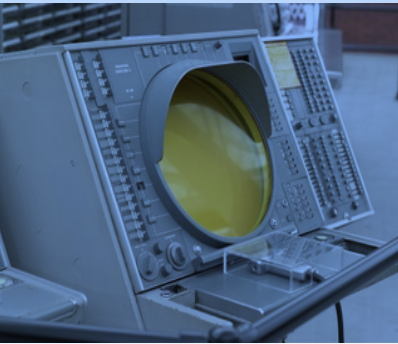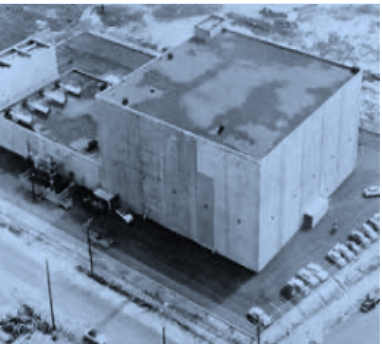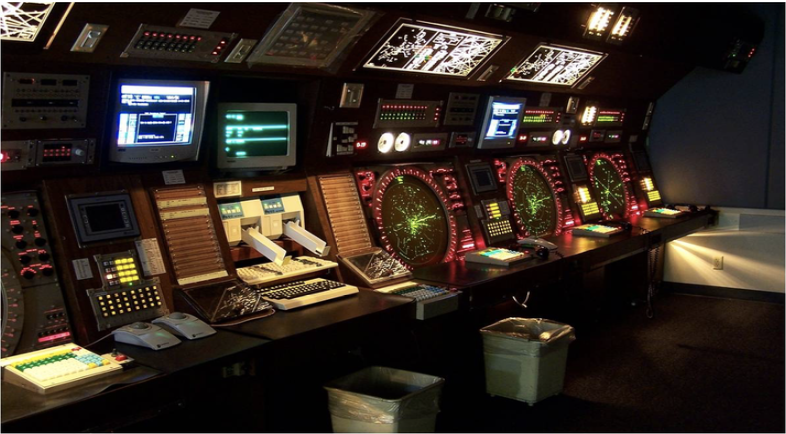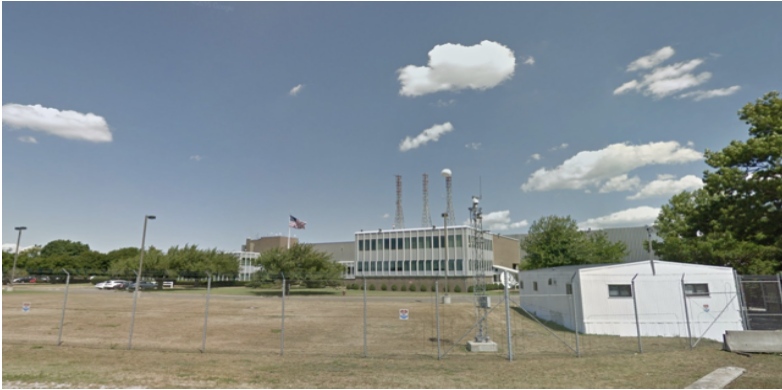On the role of technology in Healthcare – Lessons learned from the architecture of Air Traffic Control
Comment on this (at bottom of page)
In the early days of air traffic control, separation between aircraft operating under what is known as “Instrument Flight Rules” (IFR) was accomplished by plotting the position of each aircraft using a large table and tiny wooden aircraft. As airplanes would report their position over radio, or their position was inferred from flight plans and elapsed time, controllers would move the little wooden airplanes across the table. If two of the wooden airplanes got too close to each other on the table, it was assumed that the real airplanes were also too close and attempts would be made to make contact with them and resolve the situation.
The system worked well and no real-world airplanes collided. It was, however, horrendously inefficient both in the use of airspace as well as of the controller’s time.
After WW II, technologies that had been developed to vanquish the enemy — RADAR in particular — found their way into civilian life. Computer systems originally developed to project ballistic trajectories and break Axis ciphers were adapted to track incoming Soviet nuclear bombers, creating the SAGE (Semi-Automatic Ground Environment) system (see sidebar).
Subsequently, the Civil Aeronautics Board (precursor to the FAA) obtained sets of war-surplus RADAR equipment and began deploying them across the United States. It was realized that using RADAR allowed air traffic control to automate the manual process of moving the wooden airplanes across the table. It was also realized that the information processing capability of the SAGE system could be adapted to tracking civilian airliners.
The combination of RADAR technology and the information processing capability of the SAGE system allowed a drastic increase in the capacity of the air traffic control system. At the same time, it also drastically reduced and automated the air traffic controller’s job -- gaining huge increases in personnel productivity and efficiency.
The mission of air traffic control, to separate aircraft operating under Instrument Flight Rules, has not changed one iota since the 1920s. The technology that they use to perform that separation, however, has changed. And the changing technology has been used not to do something different, but to do the same thing BETTER.
Because of the critical nature of air traffic control, the new technology was never incorporated to replace or disrupt the original work process. Only to augment it. Indeed, air traffic separation using RADAR and computers is, to this day, still referred to as “augmented operations” in the air traffic control manual. And the process of separating aircraft using wooden toys on a table is referred to as “normal operations” in that same manual. Air traffic controllers are taught first how to separate aircraft using paper, pencil, and pieces of wood on a table. And only when they show they can do that, are they allowed to use the augmented technology in their day-to-day work with the understanding that, if the technological excrement hits the fan — the networks go down, the computers go down, etc. they can in an instant revert to “normal operations” and drag out the tables and wooden airplanes.
The system worked well and no real-world airplanes collided. It was, however, horrendously inefficient both in the use of airspace as well as of the controller’s time.
After WW II, technologies that had been developed to vanquish the enemy — RADAR in particular — found their way into civilian life. Computer systems originally developed to project ballistic trajectories and break Axis ciphers were adapted to track incoming Soviet nuclear bombers, creating the SAGE (Semi-Automatic Ground Environment) system (see sidebar).
Subsequently, the Civil Aeronautics Board (precursor to the FAA) obtained sets of war-surplus RADAR equipment and began deploying them across the United States. It was realized that using RADAR allowed air traffic control to automate the manual process of moving the wooden airplanes across the table. It was also realized that the information processing capability of the SAGE system could be adapted to tracking civilian airliners.
The combination of RADAR technology and the information processing capability of the SAGE system allowed a drastic increase in the capacity of the air traffic control system. At the same time, it also drastically reduced and automated the air traffic controller’s job -- gaining huge increases in personnel productivity and efficiency.
The mission of air traffic control, to separate aircraft operating under Instrument Flight Rules, has not changed one iota since the 1920s. The technology that they use to perform that separation, however, has changed. And the changing technology has been used not to do something different, but to do the same thing BETTER.
Because of the critical nature of air traffic control, the new technology was never incorporated to replace or disrupt the original work process. Only to augment it. Indeed, air traffic separation using RADAR and computers is, to this day, still referred to as “augmented operations” in the air traffic control manual. And the process of separating aircraft using wooden toys on a table is referred to as “normal operations” in that same manual. Air traffic controllers are taught first how to separate aircraft using paper, pencil, and pieces of wood on a table. And only when they show they can do that, are they allowed to use the augmented technology in their day-to-day work with the understanding that, if the technological excrement hits the fan — the networks go down, the computers go down, etc. they can in an instant revert to “normal operations” and drag out the tables and wooden airplanes.
SAGE (Semi-Automated Ground Environment)
SAGE was a technological marvel, built on an entirely vacuum-tube based IBM computer, the AN/FSQ-7 (largest computer in the world at the time).
Each SAGE command center housed two AN/FSQ-7s and each AN/FSQ-7 occupied 22,000 square feet of floor space. The two computers operated in tandem for reliability, with one able to take the full load should the other fail. The AN/FSQ-7s drove a number of RADAR workstations in each center (typically about 100) that incorporated innovations like a light- pen (pictured here) that the technicians could use to “point out” missiles to the computer. The first SAGE system went online in 1958, just as Elvis Presley’s marketing genius fully productized Buddy Holly’s invention of Rock and Roll.


SAGE Console and SAGE Command Center, ca. 1958
By the late 1960s most of the US was covered with a mosaic of ex-military RADAR sites that fed data to about 20 air traffic control centers across the country. Those centers were physically modeled on the same buildings and sometimes the same sites as the SAGE systems they replaced. Each Center housed dual IBM mainframes, basically transistorized versions of the AN/FSQ7 and not retired and replaced with modern ones until the early 2000s.


ATC Console and New York Air Traffic Control Center, Ronkonkoma, NY. Note printers and paper strips next to the consoles, used when necessary to revert to “normal” operations from “augmented” operations if necessary.
Does it ever happen that air traffic control must revert to “normal operations” from “augmented
operations?” Statistically, never in the past forty years. But every hour of every day of the past forty years it could have, had it been necessary.
Healthcare is similar to air traffic control in two vital ways. First, absolute care is a requirement. Second, the first requirement drives a relentlessly pragmatic approach to work. Use that which is helpful, discard that which is not. Risk nothing that might jeopardize the mission. I once toured a pediatric ward where a wall of coffee makers were being used to make hot water. “Why is that?” I asked. “Because our water heater is broken and hot water is critical to our work, so we had to run to Walmart and get these to keep going.” “How long has the hot water heater been broken?” “Oh, about six months.”
In other words, when the machine they relied on failed, they immediately implemented a replacement, and fixing the original machine ceased to be a priority.
These are lessons from which we must learn as we deploy systems in health care. First, we must do good or at least do no harm. This is the essence of the Hippocratic oath. The best way to do that is to have a ready plan of reversion. Conceptualize the new technology as not the new norm but rather supporting “augmented operations.” The technology improves on the existing work, it never impedes it. If augmented operations are not possible, normal operations can be immediately implemented.
For PAS this means ensuring that all of the existing machinery of normal operations — sticky notes, email, pads of paper, the telephone and the fax machine are there if needed. And that staff are trained and ready to revert to them in a moment’s notice, no matter how unlikely our due diligence and caution makes that moment. That training, the ability to seamlessly revert to normal operations when augmented operations are unavailable, gives the confidence necessary to accept, deploy, and use the new technology and move the state of care forward.
Healthcare is similar to air traffic control in two vital ways. First, absolute care is a requirement. Second, the first requirement drives a relentlessly pragmatic approach to work. Use that which is helpful, discard that which is not. Risk nothing that might jeopardize the mission. I once toured a pediatric ward where a wall of coffee makers were being used to make hot water. “Why is that?” I asked. “Because our water heater is broken and hot water is critical to our work, so we had to run to Walmart and get these to keep going.” “How long has the hot water heater been broken?” “Oh, about six months.”
In other words, when the machine they relied on failed, they immediately implemented a replacement, and fixing the original machine ceased to be a priority.
These are lessons from which we must learn as we deploy systems in health care. First, we must do good or at least do no harm. This is the essence of the Hippocratic oath. The best way to do that is to have a ready plan of reversion. Conceptualize the new technology as not the new norm but rather supporting “augmented operations.” The technology improves on the existing work, it never impedes it. If augmented operations are not possible, normal operations can be immediately implemented.
For PAS this means ensuring that all of the existing machinery of normal operations — sticky notes, email, pads of paper, the telephone and the fax machine are there if needed. And that staff are trained and ready to revert to them in a moment’s notice, no matter how unlikely our due diligence and caution makes that moment. That training, the ability to seamlessly revert to normal operations when augmented operations are unavailable, gives the confidence necessary to accept, deploy, and use the new technology and move the state of care forward.